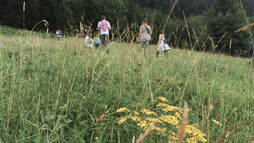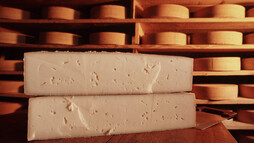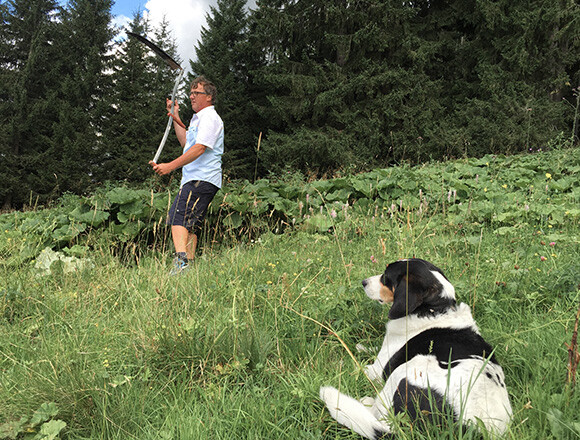

Hay Cuisine – Eat What You Mow!
A menu that is very similar to a cow’s diet is not something you see every day: hay sparkling wine, hay soup and grass-fed lamb cooked in hay.
What kind of chef strikes upon the idea of sprinkling dried grass over a bowl of soup? And what about snuggling the lamb upon a bed of hay in the oven just as it would have done when it was alive – is this macabre or just a logical consequence?
The best way to find out exactly what hay cuisine in Kleinwalsertal is all about is to take a walk in the countryside. ‘Bend your knees slightly. Keep your back straight and lean forward slightly.’ This sounds like a fitness routine – goodness gracious, this is not far from the truth! The freshly sharpened scythe slices each and every stem of coltsfoot. To achieve this, it is necessary to repeatedly move the trunk of the body left and right in quarter circle motions. This is a steady motion which becomes increasingly more arduous the more impassable and the more steep the terrain becomes.
So, when you are enjoying a glass of fresh milk in the morning, when you are slicing some cheese for your sandwich and when you are enjoying the pleasure of tucking into a tender piece of grass-fed lamb, you might stop for a moment and think about the fact that all this goodness started with the Mahd (mow).
During your hiking adventures across the Kleinwalsertal gourmet region (Genuss Region), you may decide to have a go at scything yourself on a scything course with one of the organic farmers!





















Share page...
...and tell others